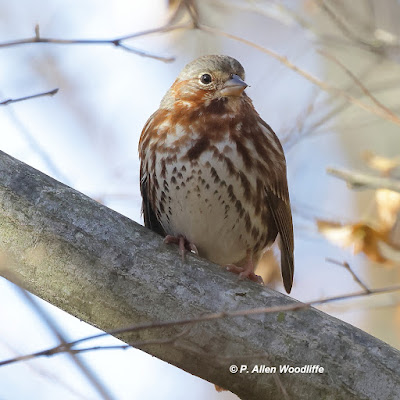Undoubtedly the highlight bird for me in recent days, is the presence of a Cattle Egret. There has been the occasional report of one somewhere in southern Chatham-Kent over the last couple of weeks, but this one stuck around for at least a few days, giving many birders a successful outing.
It wasn't always easy to find, and usually it was patience that made it successful. The bird could be quite well hidden for great lengths of time, and then all of a sudden be seen in flight heading to one of its preferred feeding areas. As far as I know, it was either at the edge of a pasture with cattle, or more likely to be in a hay field with rather short vegetation, or on occasion, even on a lawn nearby. On more than one occasion, a Northern Harrier that was hunting close by gave the egret cause for alarm, and it would fly off to another spot, but given that the hay field was large enough, would stay within sight of the road side where birders congregated.
I saw this egret on several occasions as I was going back and forth from home to either Rondeau or Erieau, and came across several birders while doing so, all of which happily saw this bird.
At Rondeau, there was always something to see and photograph, although at times one had to be at the right spot at the right time, or cover a lot of area. I did not go after the very distant Western Grebe that was present off the east beach on the weekend. I have seen this species at a much closer range, several years ago, and got some satisfying photos at that time. I haven't caught up to a Red-throated Loon this fall yet either. Maybe on one of the coming days. But the influx of one of my favourite sparrows, the Fox Sparrow, has been fun to see. It seems they often travel in small bunches, and this is prime time to see them. I counted approximately 15 in a couple of bunches along the Black Oak Trail a few days ago. I find that they often respond well to 'spishing', and come in quite a bit closer to investigate.
Cedar Waxwings continue to be fairly common, at least where there are berries of Red Cedar to be had.
On one sunny and not too cool day, a couple of Eastern Commas were still flitting around along the more sheltered part of a trail.....
.....and it seems the local Eastern Screech Owl has returned to one of its regular tree cavities. It is the first time I have seen it there in several months.
At Erieau a few days ago, the highlight was a Purple Sandpiper. As many as three had been seen a couple of days earlier, but when I checked out the end of the pier, there was only one that I could find. The bird was back lit, so it required a bit more processing to get it to this condition.
It is a fairly regular occurring shorebird in very small numbers, but not always easy to catch up to. Depending on the year, one may even overwinter in some relatively out-of-the way location, such as the far reaches of the south beach of Rondeau. They are discovered fairly regularly on the Christmas Bird Count if there is adequate coverage of such area.
There are some good mud flats at the Keith McLean Conservation Lands, which has attracted large numbers of some species of shorebird. Dunlin is the most abundant by far at this time of year, with sometimes several hundred birds being reported.
Much less common is Semipalmated Sandpiper, a little smaller and with a shorter and straighter bill.Here is a side-by-side view of those two shorebird species.
A stop at St. Clair NWA can be rewarding for bird photos. The Tundra Swans are on the way back, and will number in the hundreds or even thousands in the near future. Some will likely even stay the winter, depending on the open water and field conditions. They are often seen at a distance.....
There are lots of ducks at the NWA, including Ruddy Duck, shown next..
...and Northern Shoveler, the less colourful female of the pair which is next.
American Coots are plentiful.
Again, the presence of many Fox Sparrows were indicative of the time of year....
...as were American Tree Sparrows.
An American Goldfinch decided to check me out from this grass stem, rather than fly away like its fellow goldfinches did. It is clearly in its non-breeding plumage.
The Mitchell's Bay North Shore Trail can be worth checking out, depending on the light and the wind. Here, as in many lake shore areas, are exposed mudflats, and with the above freezing temperatures, are popular with shorebirds. As is often the case, Dunlin is by far the most abundant shorebird. There were well over 100 of them on my most recent visit, often seen in flight....
This next one was not part of the larger group. It seemed to prefer hanging out by itself, although it didn't look quite the same as the others, and may have suffered a slight injury.
A single Greater Yellowlegs was in the same area....
...as were several Killdeer.
This adult Bald Eagle was noted at the lake edge, surveying the lake itself.
A visit down the Thames River towards Jeanette's Creek turned up several Great Blue Herons....
....and Great Egrets. Will some stay for at least the early part of the coming winter and be counted on the upcoming Christmas Bird Count? It has happened before, so stay tuned!If you would like to subscribe, or unsubscribe, to Nature Nuggets, send an email to: prairietramper@gmail.com
































No comments:
Post a Comment